Books
08.01.10
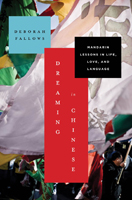
Dreaming in Chinese
Deborah Fallows has spent much of her life learning languages and traveling around the world. But nothing prepared her for the surprises of learning Mandarin, China's most common language, or the intensity of living in Shanghai and Beijing. Over time, she realized that her struggles and triumphs in studying the language of her adopted home provided small clues to deciphering the behavior and habits of its people, and its culture's conundrums. As her skill with Mandarin increased, bits of the language-a word, a phrase, an oddity of grammar-became windows into understanding romance, humor, protocol, relationships, and the overflowing humanity of modern China.Fallows learned, for example, that the abrupt, blunt way of speaking that Chinese people sometimes use isn't rudeness, but is, in fact, a way to acknowledge and honor the closeness between two friends. She learned that English speakers' trouble with hearing or saying tones-the variations in inflection that can change a word's meaning-is matched by Chinese speakers' inability not to hear tones, or to even take a guess at understanding what might have been meant when foreigners misuse them.In sharing what she discovered about Mandarin, and how those discoveries helped her understand a culture that had at first seemed impenetrable, Deborah Fallows's Dreaming in Chinese opens up China to Westerners more completely, perhaps, than it has ever been before. —WalkerBooks
Books
04.15.10
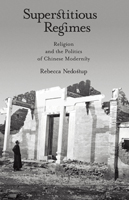
Superstitious Regimes
We live in a world shaped by secularism—the separation of numinous power from political authority and religion from the political, social, and economic realms of public life. Not only has progress toward modernity often been equated with secularization, but when religion is admitted into modernity, it has been distinguished from superstition. That such ideas are continually contested does not undercut their extraordinary influence.These divisions underpin this investigation of the role of religion in the construction of modernity and political power during the Nanjing Decade (1927–1937) of Nationalist rule in China. This book explores the modern recategorization of religious practices and people and examines how state power affected the religious lives and physical order of local communities. It also looks at how politicians conceived of their own ritual role in an era when authority was meant to derive from popular sovereignty. The claims of secular nationalism and mobilizational politics prompted the Nationalists to conceive of the world of religious association as a dangerous realm of “superstition” that would destroy the nation. This is the first “superstitious regime” of the book’s title. It also convinced them that national feeling and faith in the party-state would replace those ties—the second “superstitious regime.” —Harvard University Press{chop}
Books
04.01.10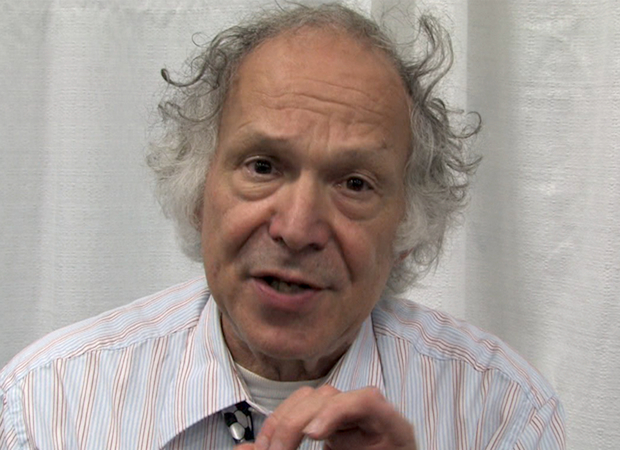
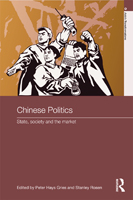
Chinese Politics
Written by a team of leading China scholars, this text interrogates the dynamics of state power and legitimation in 21st-century China. Despite the continuing economic successes and rising international prestige of China there has been increasing social protests over corruption, land seizures, environmental concerns, and homeowner movements. Such political contestation presents an opportunity to explore the changes occurring in China today—what are the goals of political contestation, how are Chinese Communist Party leaders legitimizing their rule, who are the specific actors involved in contesting state legitimacy today and what are the implications of changing state-society relations for the future viability of the People’s Republic? —Routledge
Books
04.01.10
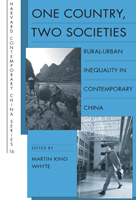
One Country, Two Societies
This timely and important collection of original essays analyzes China’s foremost social cleavage: the rural-urban gap. It is now clear that the Chinese communist revolution, though professing dedication to an egalitarian society, in practice created a rural order akin to serfdom, in which 80 percent of the population was effectively bound to the land. China is still struggling with that legacy. The reforms of 1978 changed basic aspects of economic and social life in China’s villages and cities and altered the nature of the rural-urban relationship. But some important institutions and practices have changed only marginally or not at all, and China is still sharply divided into rural and urban castes with different rights and opportunities in life, resulting in growing social tensions. The contributors, many of whom conducted extensive fieldwork, examine the historical background of rural-urban relations; the size and trend in the income gap between rural and urban residents in recent years; aspects of inequality apart from income (access to education and medical care, the digital divide, housing quality and location); experiences of discrimination, particularly among urban migrants; and conceptual and policy debates in China regarding the status and treatment of rural residents and urban migrants. —Harvard University Press
Books
04.01.10
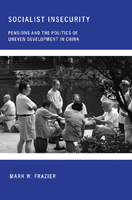
Socialist Insecurity
Over the past two decades, China has rapidly increased its spending on its public pension programs, to the point that pension funding is one of the government's largest expenditures. Despite this, only about fifty million citizens—one-third of the country's population above the age of sixty—receive pensions. Combined with the growing and increasingly violent unrest over inequalities brought about by China's reform model, the escalating costs of an aging society have brought the Chinese political leadership to a critical juncture in its economic and social policies.In Socialist Insecurity, Mark W. Frazier explores pension policy in the People's Republic of China, arguing that the government's push to expand pension and health insurance coverage to urban residents and rural migrants has not reduced, but rather reproduced, economic inequalities. He explains this apparent paradox by analyzing the decisions of the political actors responsible for pension reform: urban officials and state-owned enterprise managers. Frazier shows that China's highly decentralized pension administration both encourages the "grabbing hand" of local officials to collect large amounts of pension and other social insurance revenue and compels redistribution of these revenues to urban pensioners, a crucial political constituency.More broadly, Socialist Insecurity shows that the inequalities of welfare policy put China in the same quandary as other large uneven developers—countries that have succeeded in achieving rapid growth but with growing economic inequalities. While most explanations of the formation and expansion of welfare states are derived from experience in today's mature welfare systems, developing countries such as China, Frazier argues, provide new terrain to explore how welfare programs evolve, who drives the process, and who sees the greatest benefit. —Cornell University Press
Books
04.01.10
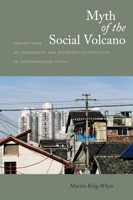
Myth of the Social Volcano
Is popular anger about rising inequality propelling China toward a "social volcano" of protest activity and instability that could challenge Chinese Communist Party rule? Many inside and outside of China have speculated, without evidence, that the answer is yes. In 2004, Harvard sociologist Martin King Whyte has undertaken the first systematic, nationwide survey of ordinary Chinese citizens to ask them directly how they feel about inequalities that have resulted since China's market opening in 1978. His findings are the subject of this book. —Stanford University Press
Books
04.01.10
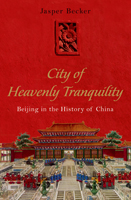
City of Heavenly Tranquility
When the world descends on Beijing for the 2008 Olympics, it will find the results of a helter skelter rush for modernization and wealth. In the course of a thousand years, temples and shrines, palaces, and gardens had filled the walls of old Peking. Its narrow, twisting streets held the collective memories of five dynasties and turbulent events of the 20th century. It has now all been swept away to make way for a new city filled with dull, boxy high rises, rows of shopping malls, office towers blocks, and residential housing developments marching down uniform streets. The City of Heavenly Tranquility explores how and why the Chinese buried their history and destroyed one of the world's most fabled cities, virtually extinguishing the culture of one of the greatest and oldest civilizations within the span of a single lifetime. In a tour de force by a long time resident, British journalist Jasper Becker brings to life the strange and exotic lives of the emperors, eunuchs, courtesans, and warriors who for centuries ruled from behind the red walls of the Forbidden City. Becker mixes his own experiences with poignant stories from those who were destroyed in the tornado of destruction as they tried to rescue something from the past. Writing vividly and with passion, Becker shows how ruthless officials and a fiercely nationalistic government set itself the monumental mission to change the fabric of a nation—and succeeded. He also explains how those currently in power, Mao's former Red Guards, remain determined to modernize China by jettisoning the past and clearing space for the future, evicting over three million residents in Beijing alone. —Oxford University Press
Books
04.01.10
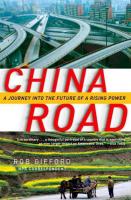
China Road
Route 312 is the Chinese Route 66. It flows three thousand miles from east to west, passing through the factory towns of the coastal areas, through the rural heart of China, then up into the Gobi Desert, where it merges with the Old Silk Road. The highway witnesses every part of the social and economic revolution that is turning China upside down. In this utterly surprising and deeply personal book, acclaimed National Public Radio reporter Rob Gifford, a fluent Mandarin speaker, takes the dramatic journey along Route 312 from its start in the boomtown of Shanghai to its end on the border with Kazakhstan. Gifford reveals the rich mosaic of modern Chinese life in all its contradictions, as he poses the crucial questions that all of us are asking about China: Will it really be the next global superpower? Is it as solid and as powerful as it looks from the outside? And who are the ordinary Chinese people, to whom the twenty-first century is supposed to belong?Gifford is not alone on his journey. The largest migration in human history is taking place along highways such as Route 312, as tens of millions of people leave their homes in search of work. He sees signs of the booming urban economy everywhere, but he also uncovers many of the country’s frailties, and some of the deep-seated problems that could derail China’s rise. The whole compelling adventure is told through the cast of colorful characters Gifford meets: garrulous talk-show hosts and ambitious yuppies, impoverished peasants and tragic prostitutes, cell-phone salesmen, AIDS patients, and Tibetan monks. He rides with members of a Shanghai jeep club, hitchhikes across the Gobi desert, and sings karaoke with migrant workers at truck stops along the way. —Random House
Books
04.01.10
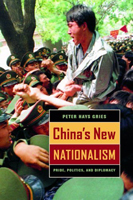
China’s New Nationalism
Three American missiles hit the Chinese embassy in Belgrade, and what Americans view as an appalling and tragic mistake, many Chinese see as a "barbaric" and intentional "criminal act," the latest in a long series of Western aggressions against China. In this book, Peter Hays Gries explores the roles of perception and sentiment in the growth of popular nationalism in China. At a time when the direction of China's foreign and domestic policies have profound ramifications worldwide, Gries offers a rare, in-depth look at the nature of China's new nationalism, particularly as it involves Sino-American and Sino-Japanese relations—two bilateral relations that carry extraordinary implications for peace and stability in the twenty-first century. Through recent Chinese books and magazines, movies, television shows, posters, and cartoons, Gries traces the emergence of this new nationalism. Anti-Western sentiment, once created and encouraged by China's ruling PRC, has been taken up independently by a new generation of Chinese. Deeply rooted in narratives about past "humiliations" at the hands of the West and impassioned notions of Chinese identity, popular nationalism is now undermining the Communist Party's monopoly on political discourse, threatening the regime's stability. As readable as it is closely researched and reasoned, this timely book analyzes the impact that popular nationalism will have on twenty-first century China and the world. —University of California Press
Books
04.01.10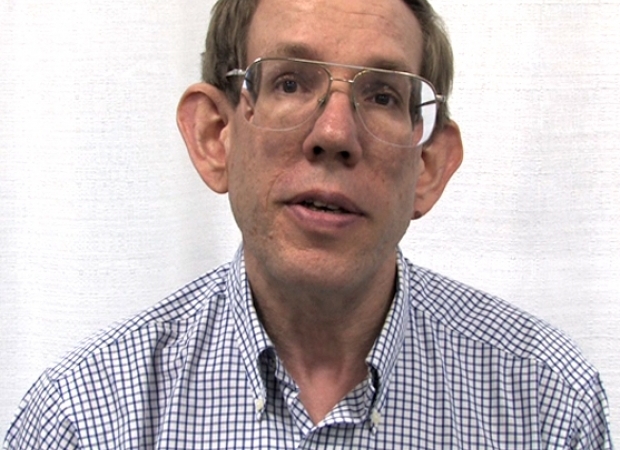
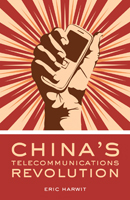
China’s Telecommunications Revolution
China's telecommunications industry has seen revolutionary transformation and growth over the past three decades. Chinese Internet users number nearly 150 million, and the P.R.C. expects to quickly pass the U.S. in total numbers of connected citizens. The number of mobile and fixed-line telephone users soared from a mere 2 million in 1980 to a total of nearly 800 million in 2007. China has been the most successful developing nation in history for spreading telecommunications access at an unparalleled rapid pace.This book tells how China conducted its remarkable “telecommunications revolution.” It examines both corporate and government policy to get citizens connected to both voice and data networks, looks at the potential challenges to the one-party government when citizens get this access, and considers the new opportunities for networking now offered to the people of one of the world's fastest growing economies. The book is based on the author's fieldwork conducted in several Chinese cities, as well as extensive archival research. It focuses on key issues such as building and running the country's Internet, mobile phone company rivalry, foreign investment in the sector, and telecommunications in China’s vibrant city of Shanghai. It also considers the country’s internal “digital divide,” and questions how equitable the telecommunications revolution has been. Finally, it examines the ways the P.R.C.'s entry to the World Trade Organization will shape the future course of telecommunications growth. —Oxford University Press
Books
04.01.10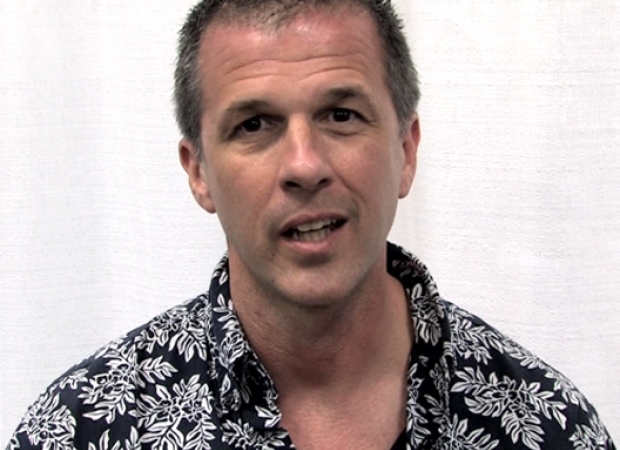
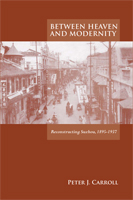
Between Heaven and Modernity
Combining social, political, and cultural history, this book examines the contestation over space, history, and power in the late Qing and Republican-era reconstruction of the ancient capital of Suzhou as a modern city. Located fifty miles west of Shanghai, Suzhou has been celebrated throughout Asia as a cynosure of Chinese urbanity and economic plenty for a thousand years. With the city's 1895 opening as a treaty port, businessmen and state officials began to draw on Western urban planning in order to bolster Chinese political and economic power against Japanese encroachment. As a result, both Suzhou as a whole and individual components of the cityscape developed new significance according to a calculus of commerce and nationalism. Japanese monks and travelers, Chinese officials, local people, and others competed to claim Suzhou’s streets, state institutions, historic monuments, and temples, and thereby to define the course of Suzhou’s and greater China’s modernity. —Stanford University Press
Books
03.15.10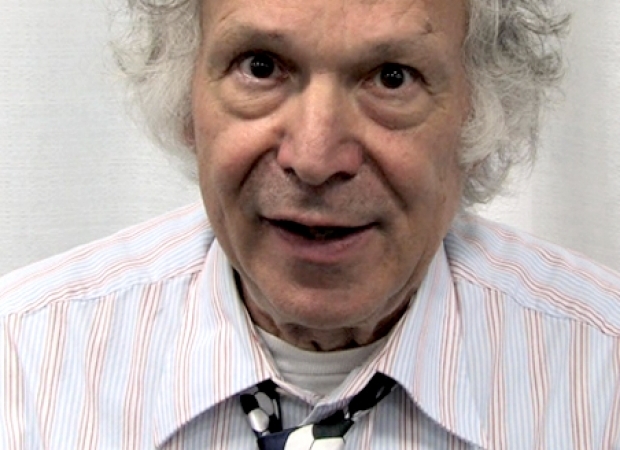
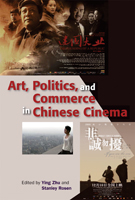
Art, Politics and Commerce in Chinese Cinema
Art, politics, and commerce are intertwined everywhere, but in China the interplay is explicit, intimate, and elemental, and nowhere more so than in the film industry. Understanding this interplay in the era of market reform and globalization is essential to understanding mainland Chinese cinema. This interdisciplinary book provides a comprehensive reappraisal of Chinese cinema, surveying the evolution of film production and consumption in mainland China as a product of shifting relations between art, politics, and commerce. Within these arenas, each of the twelve chapters treats a particular history, development, genre, filmmaker or generation of filmmakers, adding up to a distinctively comprehensive rendering of Chinese cinema. The book illuminates China’s changing state-society relations, the trajectory of marketization and globalization, the effects of China’s stark historical shifts, Hollywood’s role, the role of nationalism, and related themes of interest to scholars of Asian studies, cinema and media studies, political science, sociology, comparative literature and Chinese language. Contributors include Ying Zhu, Stanley Rosen, Seio Nakajima, Zhiwei Xiao, Shujen Wang, Paul Clark, Stephen Teo, John Lent, Ying Xu, Yingjin Zhang, Bruce Robinson, Liyan Qin, and Shuqin Cui. —Hong Kong University Press
Books
03.01.10
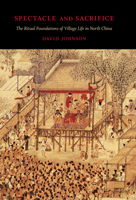
Spectacle and Sacrifice
This book is about the ritual world of a group of rural settlements in Shanxi province in pre-1949 North China. Temple festivals, with their giant processions, elaborate rituals, and operas, were the most important influence on the symbolic universe of ordinary villagers and demonstrate their remarkable capacity for religious and artistic creation. The great festivals described in this book were their supreme collective achievements and were carried out virtually without assistance from local officials or educated elites, clerical or lay. Chinese culture was a performance culture, and ritual was the highest form of performance. Village ritual life everywhere in pre-revolutionary China was complex, conservative, and extraordinarily diverse. Festivals and their associated rituals and operas provided the emotional and intellectual materials out of which ordinary people constructed their ideas about the world of men and the realm of the gods. It is, David Johnson argues, impossible to form an adequate idea of traditional Chinese society without a thorough understanding of village ritual. Newly discovered liturgical manuscripts allow him to reconstruct North Chinese temple festivals in unprecedented detail and prove that they are sharply different from the Daoist- and Buddhist-based communal rituals of South China. —Harvard University Press
Books
03.01.10
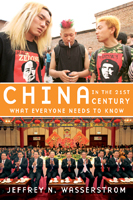
China In the 21st Century
The need to understand this global giant has never been more pressing: China is constantly in the news, yet conflicting impressions abound. Within one generation, China has transformed from an impoverished, repressive state into an economic and political powerhouse. In China in the 21st Century: What Everyone Needs to Know, Jeffrey Wasserstrom provides cogent answers to the most urgent questions regarding the newest superpower and offers a framework for understanding its meteoric rise. Focusing his answers through the historical legacies—Western and Japanese imperialism, the Mao era, and the massacre near Tiananmen Square—that largely define China's present-day trajectory, Wasserstrom introduces readers to the Chinese Communist Party, the building boom in Shanghai, and the environmental fall-out of rapid Chinese industrialization. He also explains unique aspects of Chinese culture such as the one-child policy, and provides insight into how Chinese view Americans. Wasserstrom reveals that China today shares many traits with other industrialized nations during their periods of development, in particular the United States during its rapid industrialization in the 19th century. Finally, he provides guidance on the ways we can expect China to act in the future vis-a-vis the United States, Russia, India, and its East Asian neighbors. —Oxford University Press



